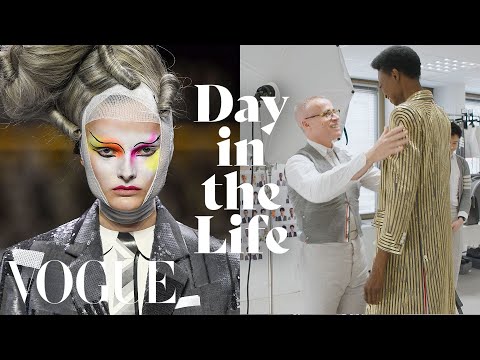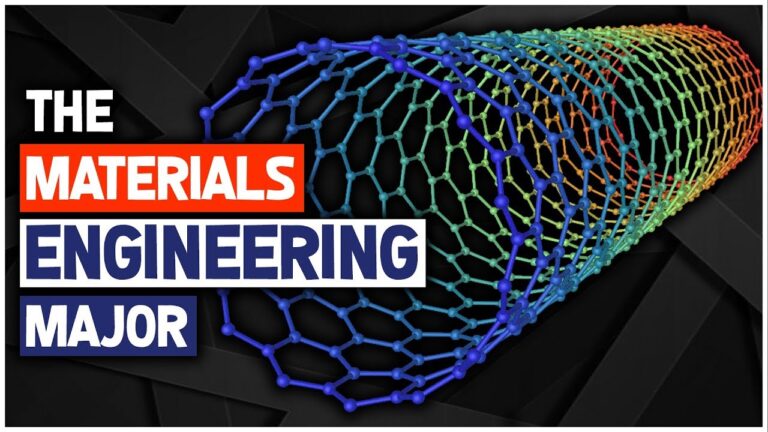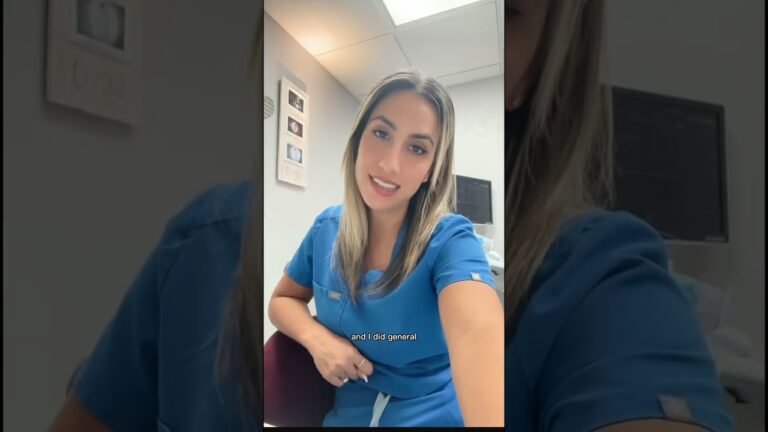Design Your Future: Fashion Designer Job Description & Salary
Fashion Designer Job Description: A fashion designer is responsible for creating and designing clothing, shoes, and accessories. They research current fashion trends, sketch designs, select fabrics and trims, and create prototypes. Fashion designers collaborate with patternmakers and sample makers to bring their designs to life. They also work closely with manufacturers to ensure that the final products meet their vision and quality standards. Additionally, fashion designers may be involved in marketing their designs by creating lookbooks and participating in fashion shows. They need to stay updated on fashion trends, have a strong understanding of color, texture, and pattern, and possess excellent drawing and sewing skills. Communication and collaboration skills are also important in this role, as fashion designers often work with teams to bring their designs to fruition.
Fashion Designer Salary: The salary of a fashion designer can vary depending on factors such as experience, location, and employer. According to the Bureau of Labor Statistics, the median annual wage for fashion designers was $73,790 as of May 2020. However, the top 10% of fashion designers earned more than $149,370, while the bottom 10% earned less than $38,570. Fashion designers working in wholesale trade and manufacturing tend to earn higher salaries compared to those in retail. Additionally, fashion designers with established brands or successful fashion lines may earn significantly higher incomes. Overall, the salary of a fashion designer can be lucrative, especially for those who are highly skilled, experienced, and successful in the industry.

Fashion Designer Job Description Template
Fashion Designer Job Description
A fashion designer is a creative professional who is responsible for designing and creating clothing, shoes, and accessories. They typically work in a design studio or fashion house, but some may work independently or as part of a team.
The main responsibility of a fashion designer is to develop original and innovative designs that meet the needs and preferences of consumers. They research current fashion trends, analyze market demands, and create sketches or digital designs of their ideas. They also select appropriate fabrics, colors, and patterns for their designs.
Once the design is finalized, fashion designers oversee the production process. They collaborate with patternmakers, seamstresses, and other professionals to ensure that the final product matches the original design. They may also be involved in selecting models, styling the outfits, and organizing fashion shows or presentations.
In addition to their design skills, fashion designers need to have a strong knowledge of textiles, garment construction, and manufacturing processes. They should also be familiar with industry software such as Adobe Illustrator and Photoshop. Excellent artistic and creative abilities are essential, as well as a keen eye for detail and a sense of style.
Fashion designers often work under tight deadlines and must be able to handle the pressure of the fast-paced fashion industry. They need to stay updated with the latest fashion trends and constantly seek inspiration to stay ahead of the competition.
Overall, a career as a fashion designer requires a combination of artistic talent, technical skills, and a passion for fashion. It offers opportunities for creativity, self-expression, and the chance to contribute to the ever-evolving world of fashion.
Fashion Designer Responsibilities
Fashion Designer Requirements
How Much Does A Fashion Designer Make?
Fashion Designer Salary
| Position | Salary Range |
|---|---|
| Entry-Level Fashion Designer | $35,000 – $55,000 per year |
| Junior Fashion Designer | $40,000 – $60,000 per year |
| Senior Fashion Designer | $60,000 – $100,000 per year |
| Fashion Design Director | $80,000 – $150,000 per year |
A fashion designer’s salary can vary depending on their level of experience and the company they work for. Entry-level fashion designers can expect to earn between $35,000 and $55,000 per year. As they gain more experience and move up the career ladder, junior fashion designers can earn between $40,000 and $60,000 per year. Senior fashion designers, with several years of experience, can earn between $60,000 and $100,000 per year. Those who reach the position of fashion design director can earn higher salaries ranging from $80,000 to $150,000 per year. It’s important to note that these salary ranges are approximate and can vary based on factors such as location, company size, and individual skills and achievements.
Fashion Designer Salaries by Country
Top Paying Countries for Fashion Designer
| Country | Average Salary (USD) |
|---|---|
| United States | 75,000 |
| Switzerland | 70,000 |
| Germany | 65,000 |
| Australia | 60,000 |
| United Kingdom | 55,000 |
Fashion designers in the United States earn the highest average salary of $75,000 per year among all the countries. Following closely is Switzerland, where fashion designers make an average of $70,000 per year. Germany, Australia, and the United Kingdom are also among the top paying countries for fashion designers, with average salaries ranging from $55,000 to $65,000 per year.
A video on the topic Fashion Designer
Interview Questions for Fashion Designer
1. Can you tell us about your background and experience in fashion design?
I have a Bachelor’s degree in Fashion Design from XYZ University. I also have experience working as an intern at a renowned fashion house and have worked on various freelance projects. Through these experiences, I have developed a strong understanding of design principles, fabric selection, garment construction, and trend analysis.
2. How do you stay updated on the latest fashion trends?
I stay updated on the latest fashion trends by regularly attending fashion shows, exhibitions, and industry events. I also follow fashion blogs, magazines, and social media accounts of influential designers to gain inspiration and keep up with the latest trends. Additionally, I conduct thorough research on fashion forecasting platforms to understand upcoming trends.
3. Can you describe your design process from concept to finished product?
My design process starts with thorough research and trend analysis. Once I have a concept in mind, I sketch out the design, select suitable fabrics, and create a technical drawing. I then create a sample or prototype, which allows me to make necessary adjustments and modifications. After finalizing the design, I work closely with the production team to bring the design to life.
4. How do you handle tight deadlines and work under pressure?
When faced with tight deadlines and pressure, I prioritize tasks and create a detailed schedule to ensure efficient time management. I also communicate effectively with team members to delegate tasks and streamline the workflow. Additionally, I stay focused and maintain a positive attitude to tackle challenges and meet deadlines successfully.
5. What is your approach to collaborating with other professionals in the fashion industry?
I believe in fostering a collaborative and inclusive work environment. I actively listen to the ideas and perspectives of others and value their input. I communicate clearly and effectively to ensure everyone is on the same page. I believe that by working together, we can create innovative designs and achieve success.
6. How do you ensure your designs are both creative and marketable?
I strive to strike a balance between creativity and marketability in my designs. I conduct market research to understand consumer preferences and identify gaps in the market. I then incorporate unique and innovative elements into my designs while ensuring they are practical and commercially viable. Regular feedback and testing also help me refine my designs to cater to the target audience.
7. Can you discuss a time when you faced a design challenge and how you overcame it?
One time, I was tasked with designing a collection for a specific target audience that had very distinct preferences. I conducted extensive research and created mood boards to understand their style preferences. I also reached out to potential customers for feedback and conducted focus groups. By incorporating their feedback and suggestions, I was able to successfully overcome the design challenge and create a collection that resonated with the target audience.
8. How do you incorporate sustainability into your design process?
I am committed to incorporating sustainable practices into my design process. I carefully select eco-friendly and ethically sourced materials. I also focus on creating timeless and durable designs that can withstand changing trends. Additionally, I encourage upcycling and recycling by repurposing materials and reducing waste wherever possible.
9. Can you discuss a time when you had to make compromises in your design and how you handled it?
There was a project where the budget was limited, and I had to make compromises in terms of materials and embellishments. I carefully analyzed the design and identified areas where I could make adjustments without compromising the overall aesthetic. I communicated my ideas with the client and explained the reasoning behind the changes. By maintaining open and transparent communication, we were able to reach a mutual agreement and successfully complete the project.
10. What qualities do you believe are essential for a successful fashion designer?
I believe essential qualities for a successful fashion designer include creativity, attention to detail, strong communication skills, adaptability, and the ability to work well under pressure. Additionally, having a strong understanding of market trends, being open to feedback, and possessing excellent problem-solving skills are crucial for success in the fashion industry.






